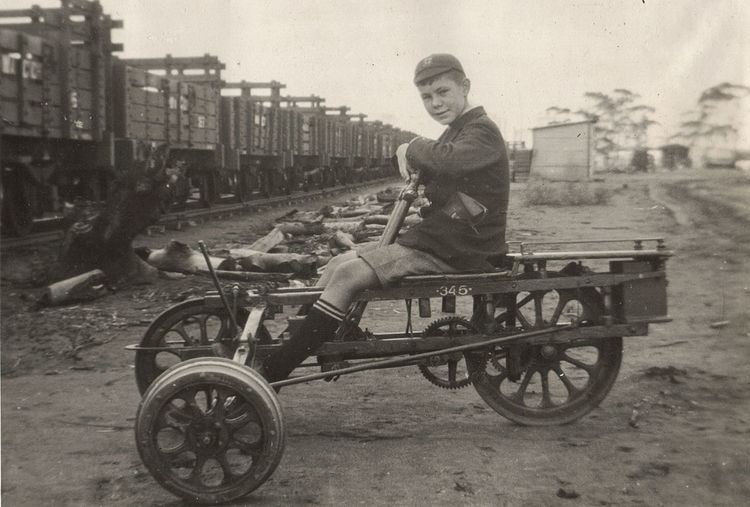 | ||
The network of railway lines in Western Australia associated with the timber and firewood industries is as old as the mainline railway system of the former Western Australian Government Railways system.
Contents
Timber railways
There is a range of terminology related to the timber railways - they have been known as logging railways, timber trams, and other names as well. The dominant feature is the mobility or easiness of moving the lines from one area of forest to another - and in the early years the relatively primitive state of the lines. The dominant feature is the narrow gauge, and lightness of the locomotives, relative to permanent railways. In Western Australia, to allow for interchangeability of rail stock with the government rail system, a lot of the lines were 3 ft 6 in (1,067 mm) gauge, however the weight of the rails was usually much lighter than mainline steel.
Timber industry
The timber industry relied mostly upon the Jarrah forests of the Darling Range and the Karri forests of the Southwest Australia region.
It had stages of development, depending upon government policy and support. The 1980s and the development of government railways assisted the industry, as well various levels of demand for Jarrah and the other timbers. Also various labour issues in the industry, and external forces required re-thinking of the industry long before concern for over-logging and forest destruction in the later 21st century
In many cases- timber/sawmilling/logging companies were family businesses, and as a consequence operations continued over time through family relationships, which in turn had effect on timber railway operations as well.
Timber companies
Firewood Industry (Goldfields Woodlines)
Companies
The main companies were:-
Woodline strike
A significant event in the woodlines history that affected the region was the industrial action that became the Woodline strike between 1 July through to 14 August 1919 over the attempt at post war reduction of wages for workers. The strike brought the goldmines of Kalgoorlie to a standstill as a result.(Kalgoorlie Miner newspaper stories reported the event)
